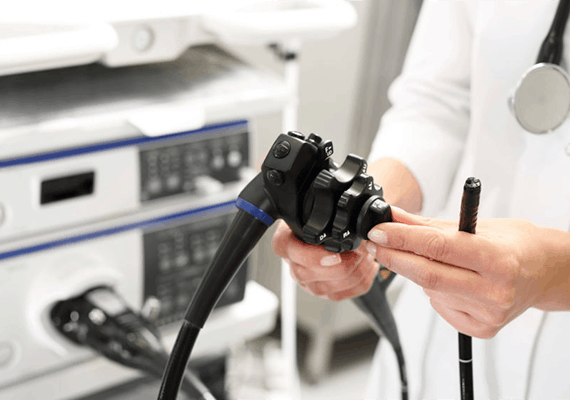
Hemorrhoid Banding
What is hemorrhoid banding?
Hemorrhoid banding or rubber band ligation is a non-surgical, minimally invasive, and fast treatment method for internal hemorrhoids in our office. For the procedure, a viewing instrument (anoscope) is inserted into the anus to locate the hemorrhoid. A rubber band is then placed on the base of the hemorrhoid using a small tool called a ligator. The rubber bands help to remove the hemorrhoid by cutting off its blood supply, causing the tissue to wither and fall off within around 2-10 days. The procedure is usually completed within a few minutes.
When is hemorrhoid banding used?
Hemorrhoid banding is used for treating internal hemorrhoids and can be effective for symptomatic hemorrhoids that are causing the patient severe pain or bleeding, contain a blood clot, or protrude through the anus. The procedure is commonly recommended for hemorrhoids that do not respond to home remedies or over-the-counter treatment measures and have enough tissue to pull into the ligator for banding.
Some conditions may impact whether hemorrhoid banding is recommended for a patient. For example, adults who are allergic to latex, have certain bleeding disorders, or inflammatory bowel disease (IBS) may require an alternative option. Hemorrhoid banding is not used to treat external hemorrhoids.
What are the benefits of hemorrhoid banding?
The procedure has a variety of benefits for patients. Hemorrhoid banding is a common choice for treating internal hemorrhoids because it does not require fasting, sedation, or post-procedure care as hemorrhoidectomies do. Hemorrhoid banding is a simple, effective, and non-surgical approach to hemorrhoid treatment that is virtually painless for patients.
Preparing for Treatment
There are usually no special preparations required for hemorrhoid banding, but a patient may be asked to avoid eating or drinking in the hours preceding the treatment if they will be undergoing anesthesia. Patients who take certain medications such as aspirin, ibuprofen, or any drugs that inhibit blood clotting may be asked to stop leading up to the procedure.
After Treatment
Hemorrhoids will begin to dry and fall off after the procedure, normally within a span of 2-10 days. There may be some minor side effects after hemorrhoid banding which include gassiness, flatulence, constipation, or swelling or pain in the abdomen. Your doctor may recommend that you take stool softeners that contain fiber as well as drink fluids to produce smooth bowel movements because straining while using the restroom may cause hemorrhoids to return.
Mild bleeding in the days following the procedure is normal, but the patient should contact their healthcare provider if it has not ceased within 2-3 days. Serious complications are rare for hemorrhoid banding patients; however, patients should watch for signs of infection, trouble urinating, pain, or aching between the genitals and rectum. Patients should contact their doctor if any symptoms linked to serious complications develop.




